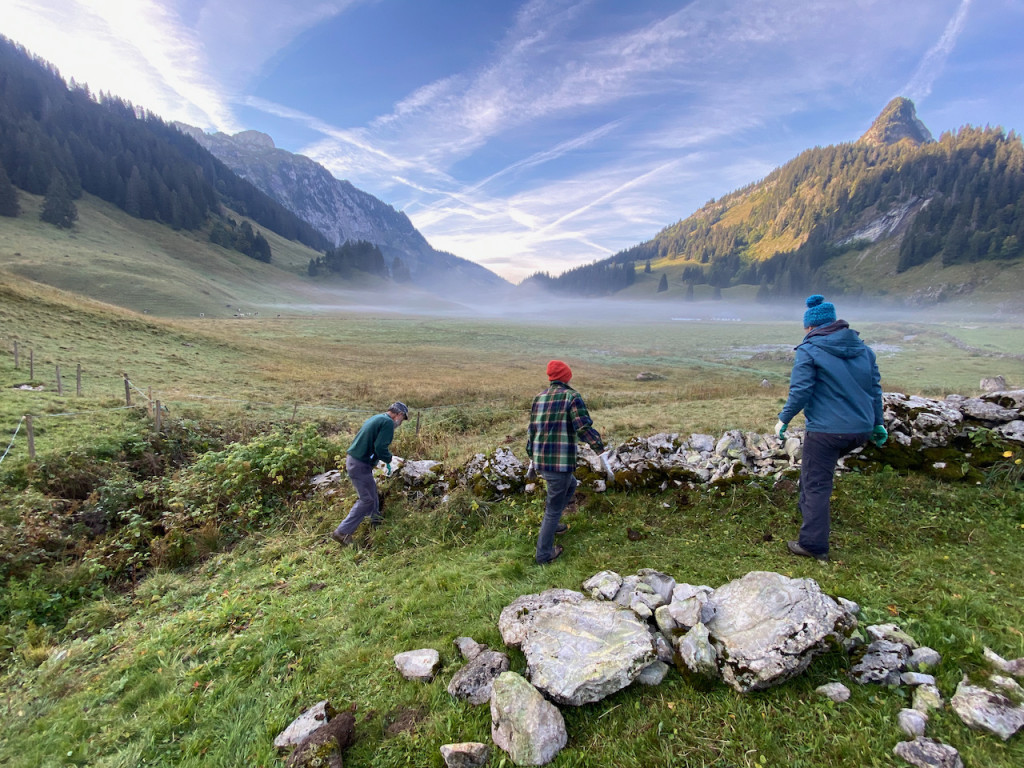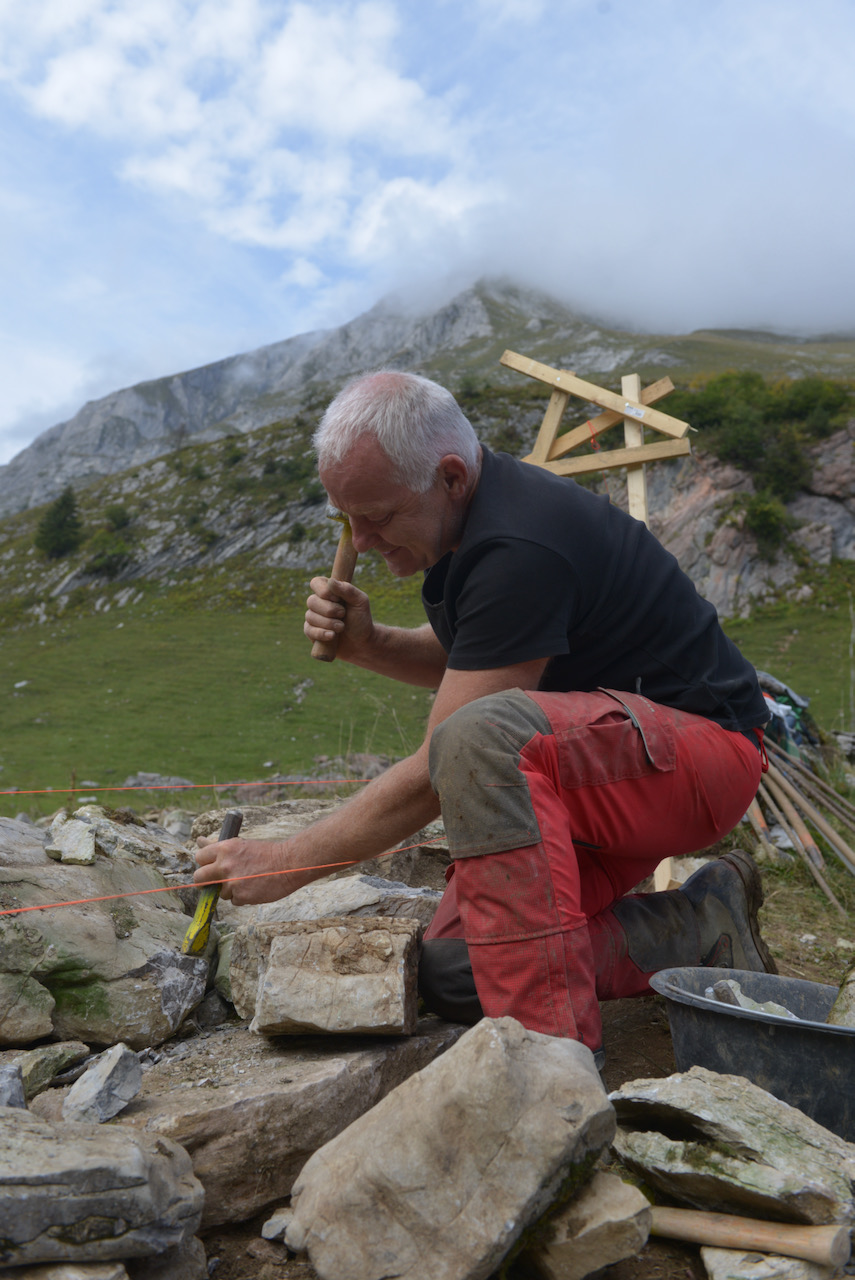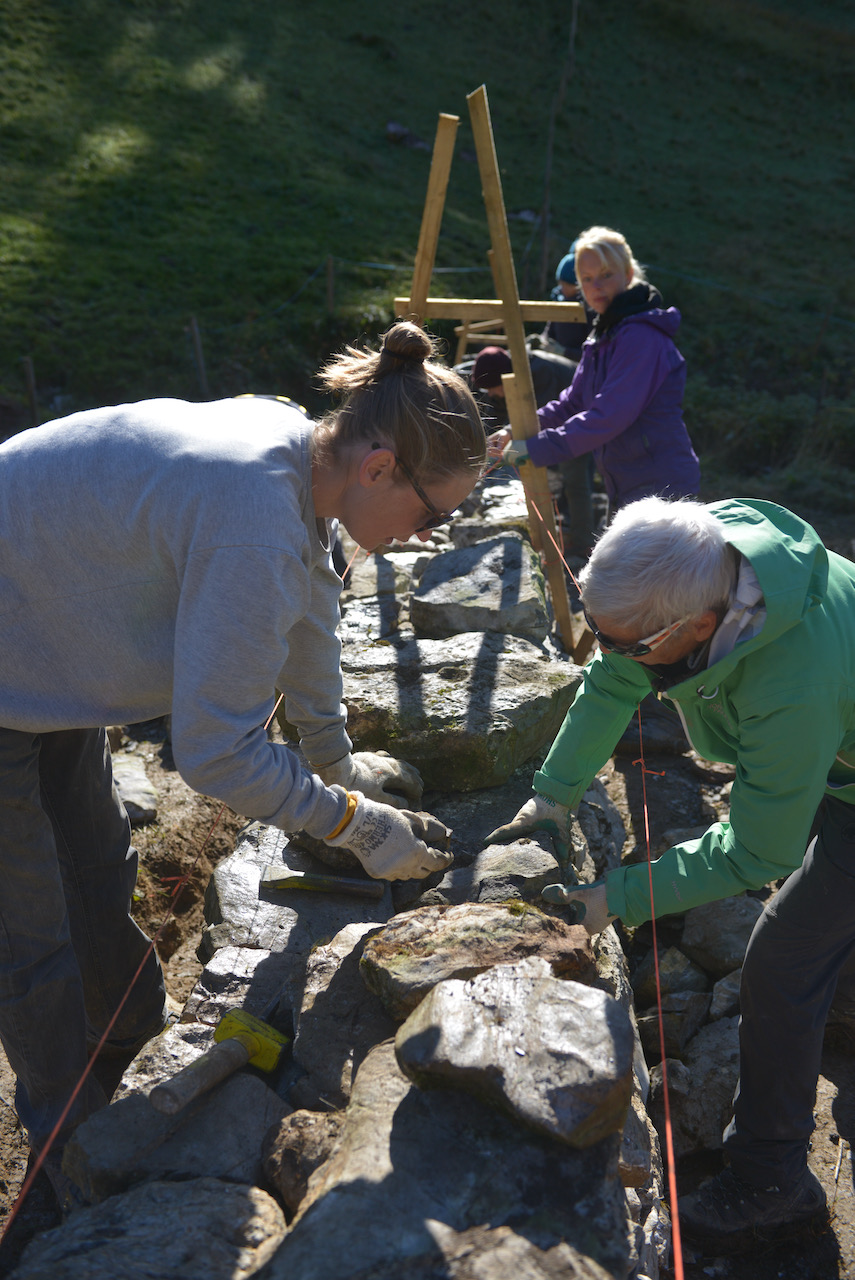More biodiversity with dry stone walls – thanks to Certas
23.11.2021On 1 October 2021, Mr. Mock, his son Patrick, Sabine Brechbühl and Claudia Masur visited the Environmental Outreach Founhttps://www.umwelteinsatz.ch/de/home-14.htmldation in action. A dry stone wall was renovated in one week in the Regional Nature Reserve Gruyère Pays-d’Enhaut with a group of adult volunteers and half of the donation of CHF 25,000 from Certas. Next year, the second half of the donation will make another week possible.
Together with Sarah Menegale, managing director of the Foundation, we met under a bright blue sky and a wonderful panoramic view of the Gastlosen Mountains with the project manager of the Park, Bruno Clément, who takes us through the beautiful landscape to the dry wall. “The group was particularly lucky with the weather this week”, says Sarah happily on the 20-minute walk through the park.
An old craft learned anew
“Walls with this special construction technique are becoming increasingly rare”, explains the managing director regretfully. Some walls are heavily damaged today due to lack of maintenance or have had to make way for more modern concrete structures or fences. Some of the structures that remain are hundreds of years old and were built using traditional technology: “Completely without cement and mortar”, Sarah emphasises, and explains to us that a free-standing wall like the one we are about to see is particularly difficult to renovate. The working group of volunteers learned this special building technique under expert guidance during the course of the project week and gained general knowledge in the fields of ecology and cultural landscape, Sarah explains as we approach the group.
Stone upon stone
The group is already waiting for us and greets us warmly in front of their pride and joy – the renovated section of dry wall, which is to serve here as a cow grazing boundary. A good 20 metres of the total of the almost one kilometre long wall was renovated within the space of one week. “A mixture of frustration and joy”, as Christian Egli describes the week. It’s not the first time that the tram driver from Zurich does a voluntary stint with the Foundation. “But working in nature gives me a lot of pleasure”, he adds, and describes the week as “refuelling”. It is not easy to put the right stones in the right place at the right position, you need a special eye for the process and a lot of patience, continues Christian. The volunteer group is made up of all kinds of people. Silja Keller is also taking part this week. “The wall foundation needs the most time”, explains the structural draughtswoman from Zweisimmen. She also likes the balance between office and nature. “The week was very strenuous”, she admits, smiling that she went to bed very early each day. She has now learned a great deal about dry stone walls and can apply this knowledge directly. For example, she tells us how she is helping a friend to renovate and develop a wall in his permaculture garden.
Food and lodging for many different life forms
Dry stone walls have a variety of tasks: They serve as pasture boundaries for animals and as a protection against wind and avalanches for people. In addition, dry stone walls are used to terrace vineyards or steep slopes. But not only that – they also provide a valuable habitat for a variety of plants and animals. The survivors find food and lodging in the crevices, cracks and holes of the walls. They get by with just a little water and intensive sunlight. “Lizards and slow-worms, for example, as well as hedgehogs, spiders and toads, and even smaller types of birds find shelter in the stones”, Sarah explains to us. Plants also find sufficient space on the walls to thrive and spread, while they are ousted by fast-growing plants in other locations (for example thyme). The dry stone walls are thus a very important element of a region, as they contribute a lot both to biodiversity as well as to aesthetics.
Work first, then pleasure
We enjoy the delicious final aperitif with the entire group, including the site manager Felix Riegger and the community service worker Anthony. Over wine, bread and cheese, the group reflects on the week and shares pleasant memories. Werner, the retired all-rounder, takes us through the alpine hut, where the group found room and board for a week. Sleeping facilities are directly under the roof or in rooms on the ground floor for all those for whom 10° at night is too cold. The house completely burned down in 2015 and was only rebuilt again in 2017.
Anyone who would like to invest in the preservation of our cultural landscape can carry out a work assignment as part of a holiday work week with the Environmental Outreach Foundation and revitalise, improve and protect our landscapes with the renovation of dry stone walls.


